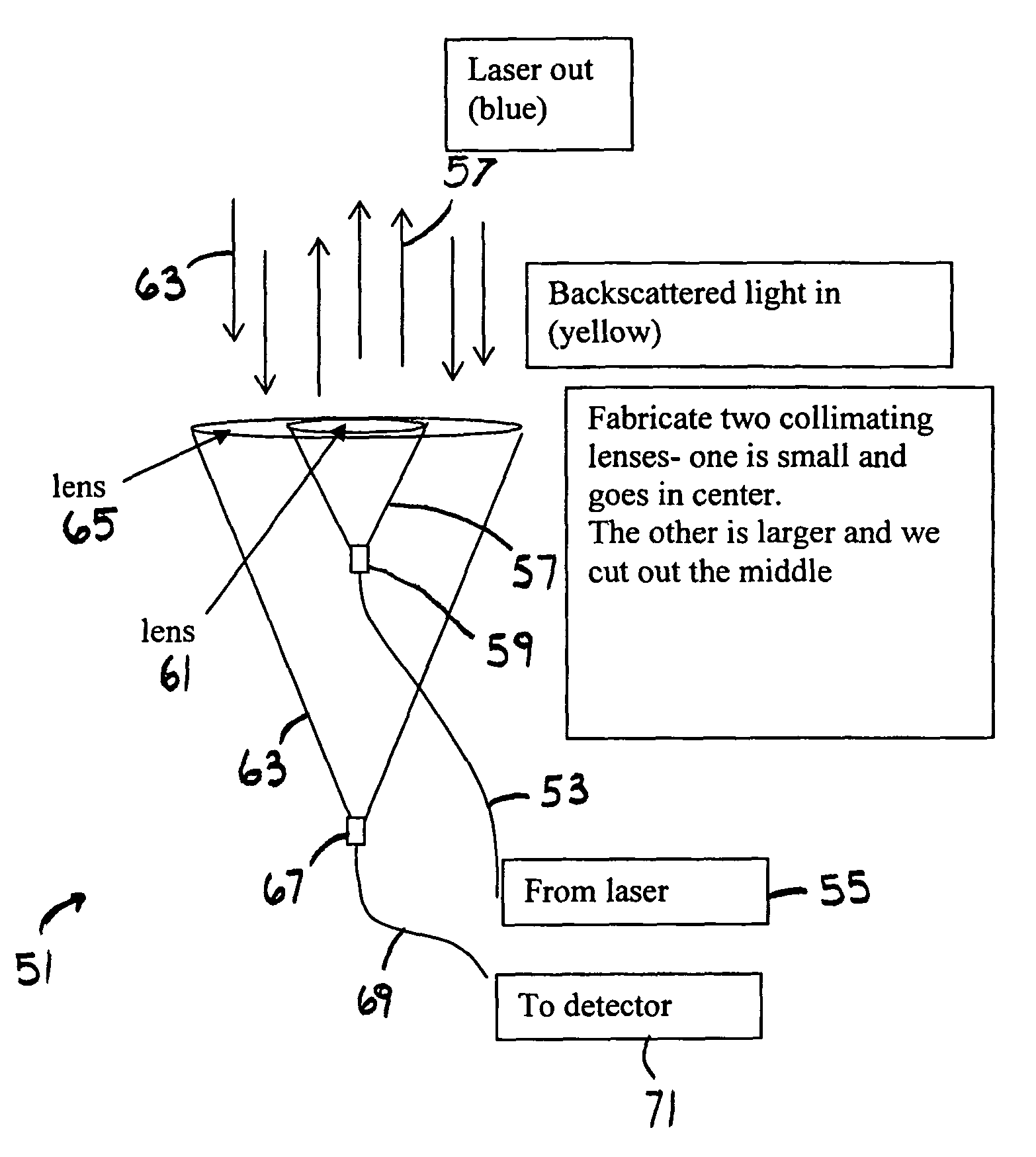Laser for coherent LIDAR
- Summary
- Abstract
- Description
- Claims
- Application Information
AI Technical Summary
Benefits of technology
Problems solved by technology
Method used
Image
Examples
embodiment 73
[0037]FIG. 4 shows an embodiment 73 where a receiver optical fiber 75 is inverted and a receiver optical configuration utilizes a parabolic or spherical mirror 77 to reflect received light 79 into a receiver optical fiber end 81 which guides light through the optical fiber 75 and to a detector 83. Transmitted light 85 travels through a transmitter optical fiber 87 and comes from a laser source 89. The transmitted light 85 passes through a collimating lens 91 in the center of the apparatus 73. This configuration provides a more compact size than the system of FIG. 3, while maintaining the advantage of better isolation of transmit and receive optical paths.
[0038]FIG. 5 shows an embodiment 93 where both a transmitter optical fiber 95 from a laser 97 and receiving optical fiber 99 to a detector 101 are inverted. The embodiment 93 of FIG. 5 also employs independent parabolic or spherical mirrors 103, 105 to achieve desired optical paths. Transmitted light 107 exits the laser-coupled opti...
embodiment 143
[0040]FIG. 8 shows an embodiment 143 where a receiver fiber 145 is upright and receives light 147 from a secondary mirror 153 located behind a transmitter fiber 151 and receives light at fiber end 146 before a detector 148. The secondary mirror 153 receives light from the parabolic (or spherical) primary mirror 149 below the receiver optical fiber 145. Transmitted light 155 leaves a laser 157, travels through a transmitter fiber 151 and through a fiber end 159. The transmitted light 155 passes through a collimating lens 161 that is small and goes in the center of the apparatus 143. The configuration in FIG. 8 provides a compact co-axial configuration.
embodiment 163
[0041]FIG. 9 shows an embodiment 163 where a transmitting optical fiber 165 is inverted off angle to a parabolic (or spherical) mirror 167. Transmitted light 169 is generated by a laser 171, travels through the transmitting optical fiber 165 and exits a fiber end 173 and then reflects off of the mirror 167 and is collimated by the collimating lens 175. Received light 177 is reflected off a second mirror 179 and up to an underside 181 of the first mirror 167. The underside 181 of the first mirror 167 then reflects the received light 177 into a received fiber end 183, through a receiver optical fiber 185 and into a detector 187.
PUM
 Login to View More
Login to View More Abstract
Description
Claims
Application Information
 Login to View More
Login to View More - R&D
- Intellectual Property
- Life Sciences
- Materials
- Tech Scout
- Unparalleled Data Quality
- Higher Quality Content
- 60% Fewer Hallucinations
Browse by: Latest US Patents, China's latest patents, Technical Efficacy Thesaurus, Application Domain, Technology Topic, Popular Technical Reports.
© 2025 PatSnap. All rights reserved.Legal|Privacy policy|Modern Slavery Act Transparency Statement|Sitemap|About US| Contact US: help@patsnap.com



